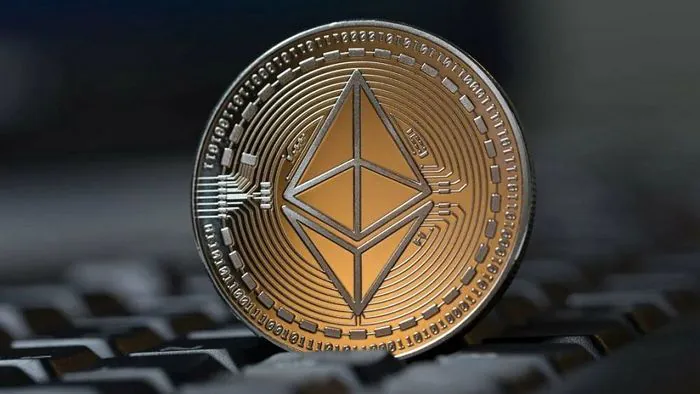© ROOT-NATION.com - Use of content is permitted with a backlink.

Since Bitcoin’s introduction in 2009, the cryptocurrency landscape has expanded rapidly, showcasing a diverse range of digital currencies beyond the market leader, Bitcoin. These alternative cryptocurrencies, each with distinct characteristics and potential, open up various avenues for investment and innovation in the blockchain realm. For individuals eager to deepen their knowledge and stay updated in this ever-evolving sector, immediate connect website, an Investment Education Firm, serves as a resourceful guide. This article aims to provide an insightful exploration into the technologies, applications, and potential influences of these leading cryptocurrencies, thereby offering a comprehensive view of the current crypto ecosystem.
Ethereum: Beyond Smart Contracts
Ethereum, often referred to as the “world computer,” introduced the concept of smart contracts to the blockchain world. Unlike Bitcoin, which primarily serves as digital gold, Ethereum’s blockchain enables programmable contracts and decentralized applications (DApps). Its native cryptocurrency, Ether (ETH), is used to power these applications and execute smart contracts.

Ethereum’s significance lies in its ability to facilitate decentralized finance (DeFi), non-fungible tokens (NFTs), and more. Ethereum 2.0, an upgrade aimed at improving scalability and energy efficiency, is on the horizon, potentially revolutionizing the blockchain space.
Ripple (XRP): Revolutionizing Cross-Border Payments
Ripple and its native token XRP aim to disrupt the traditional banking sector by enabling faster and cheaper cross-border payments. Ripple’s unique consensus mechanism, the Ripple Protocol Consensus Algorithm (RPCA), makes transactions swift and cost-effective.

XRP’s role as a bridge currency between different fiat currencies and its partnerships with major financial institutions have placed it at the forefront of cross-border payment solutions. However, regulatory challenges continue to affect Ripple’s journey.
Litecoin: The Silver to Bitcoin’s Gold
Often dubbed “digital silver” to Bitcoin’s “digital gold,” Litecoin is a peer-to-peer cryptocurrency that shares many similarities with Bitcoin, such as its proof-of-work (PoW) consensus mechanism. However, Litecoin offers faster transaction confirmation times and a different hashing algorithm.

Litecoin’s position in the market is as a reliable and fast cryptocurrency for everyday transactions. Its ability to complement Bitcoin and serve as a testbed for new features makes it a compelling option for crypto enthusiasts.
Binance Coin (BNB): Powering the Binance Ecosystem
Binance Coin (BNB) is the native cryptocurrency of Binance, one of the world’s largest cryptocurrency exchanges. BNB’s primary utility is to pay for transaction fees on the Binance platform, and it offers discounts when used for this purpose.

Binance’s rapid expansion and ecosystem development, including the launch of Binance Smart Chain (BSC), have driven the demand for BNB. Binance’s innovative approach to the crypto space positions BNB as a valuable asset.
Cardano (ADA): Building a Sustainable Blockchain Ecosystem
Cardano, a blockchain platform founded on scientific research and peer-reviewed development, strives to create a sustainable and scalable ecosystem. Cardano’s unique consensus algorithm, Ouroboros, aims to enhance security and energy efficiency.

The platform is actively involved in various projects, including decentralized finance (DeFi) and identity management. Cardano’s dedication to research-driven development and partnerships with governments and organizations sets it apart in the blockchain world.
Polkadot (DOT): Bridging Blockchains for Interoperability
Polkadot’s mission is to enable the interoperability of different blockchains, allowing them to communicate and share information seamlessly. This innovative approach is achieved through the Relay Chain and parachains.

Polkadot’s ecosystem hosts various projects, each with its own parachain, enabling customization and specialization. This potential for interoperability between blockchains could revolutionize the way information and assets are exchanged across the blockchain landscape.
Solana (SOL): Speeding up Blockchain Transactions
Solana is gaining attention for its high-speed and scalable blockchain platform. Utilizing a unique consensus mechanism called Proof of History (PoH), Solana achieves transaction speeds that rival traditional financial systems.

The Solana ecosystem is home to a growing number of decentralized applications (DApps) and projects, particularly in the DeFi space. As Solana competes with Ethereum for market share, it may play a significant role in shaping the future of blockchain technology.
Conclusion
In a rapidly evolving cryptocurrency landscape, it’s essential to look beyond Bitcoin to understand the diverse opportunities and innovations present. Ethereum’s smart contracts, Ripple’s cross-border payments, Litecoin’s speed, Binance Coin’s ecosystem, Cardano’s research-driven approach, Polkadot’s interoperability, and Solana’s speed are just a few examples of the exciting developments in the world of cryptocurrencies.
As you explore these leading cryptocurrencies, keep in mind that the crypto space is dynamic, with new projects and technologies emerging regularly. Staying informed and conducting thorough research is key to making informed investment decisions and staying ahead in this ever-changing industry. The future of cryptocurrency extends far beyond Bitcoin, and these leading alternatives are shaping the digital economy of tomorrow.

